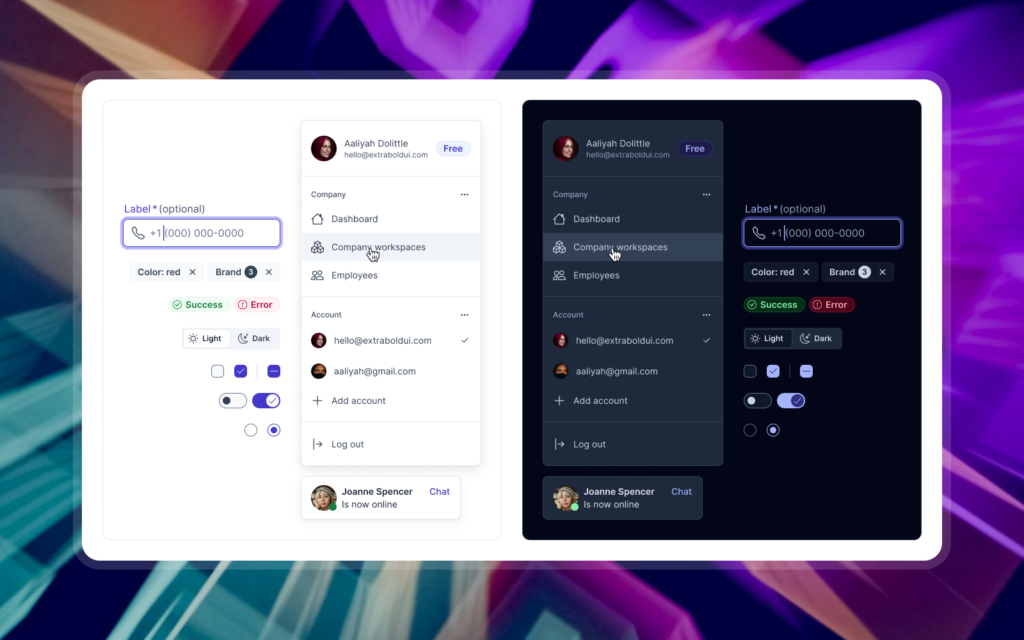1. Cuts design and implementation time
Pre-made components save the time spent building the same UI patterns over and over. Designers place tested building blocks instead of crafting each screen from scratch. Developers reuse the same implementations rather than translating bespoke mockups into code every time. The result is fewer design hours, fewer integration surprises, and faster launches.
2. Reduces iteration cycles
When components are consistent, experiments are safer. Teams can change a single token or component and see the effect across screens. That lowers the cost of trying alternatives and shortens the loop between idea and validation. Teams iterate more often because each iteration carries less risk and demands less rewriting.
3. Improves handoff clarity
Good handoffs depend on shared terminology and predictable assets. A design system provides named components, documented states, and clear usage notes. Developers no longer have to infer spacing, states, or edge-case behaviour from static files. That clarity reduces questions, shortens review cycles, and keeps implementation aligned with intent.
4. Lowers maintenance and regression risk
When visual rules live in one place, fixes apply everywhere. A single token change can correct a color, a spacing value, or a type scale across the product. That centralisation reduces the number of visual regressions that reach QA. Maintenance becomes a matter of updating the system rather than hunting individual screens.
5. Scales team productivity
A design system scales institutional knowledge. New hires learn patterns instead of isolated examples. Cross-functional teams share a common vocabulary that speeds decisions and reduces rework. As teams grow, workflows remain predictable because the system defines how common problems are solved.
Practical steps to capture these gains
Start small and focus on the most used patterns. Define core tokens for color, type, and spacing. Publish a handful of widely used components with clear usage notes. Automate simple checks and expose the system inside the design tool and the codebase. Measure the impact by tracking time-to-shipment, frequency of visual regressions, and onboarding time for new team members.
A design system saves time by making choices explicit, reusable, and versioned. It reduces redundant effort and turns routine work into predictable operations. Teams that invest in a modest, well-governed system will find they ship more often, with fewer surprises and clearer priorities.

